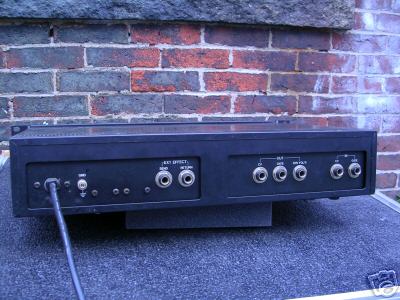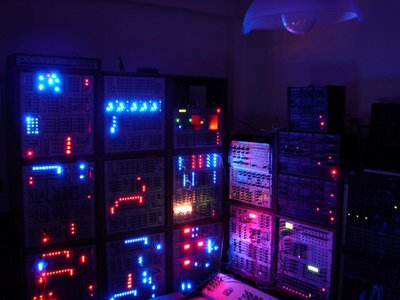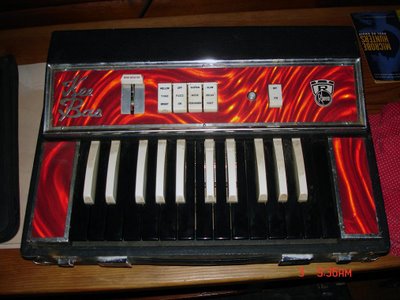

 Three shots pulled from this auction. More on the SPV-355 on SOS:
Three shots pulled from this auction. More on the SPV-355 on SOS:"The SPV355 Pitch-to-Voltage Synthesizer was launched in those very days -- 1979, to be exact -- as part of the Roland Rack series of 19-inch studio–quality effects units, amplifiers and specialist preamps. The most famous of these are probably the Roland Vocoder and the Dimension D spatial chorus. The P/V Synth is a bit of a curiosity, because it seems to have been released on the one hand as a rackmounting analogue expander module (indeed, it's said to be one of the first rackmounting synths), but on the other as a budget alternative to the Roland GR–series guitar synthesizers. These synths were quite expensive, specialised instruments; the GR system consisted of a high-quality, specially adapted guitar connected via a 24-way cable to a floor unit containing a rudimentary, six-note polyphonic synth engine. The SPV355 alternative scored points as it didn't need any special interface hardware (pickups and so on) and you could, in theory, use any old guitar to play the synth. The 1979 Roland catalogue states: "The SPV355 P/V Synthesizer is specially designed for use with guitars", which is ironic, as this is probably the P/V Synth's least effective and most problematic mode -- more on this later.
Fortunately, the SPV335's uses were not confined to guitar synthesis, and for its time (and compact size), it was quite well specified: two VCOs, a sub-oscillator, VCF, VCA, envelope generator, two audio mixers, and a multitude of interface sockets. As with other Roland Rack units, the 355 is housed in a 2U steel case and weighs nearly 6kg, which makes it a pretty hefty beast to lug around. And as for build quality, well... the word 'tank' springs to mind, as does the phrase 'heavy duty'. They don't make 'em like that any more..."
via Simon





















































